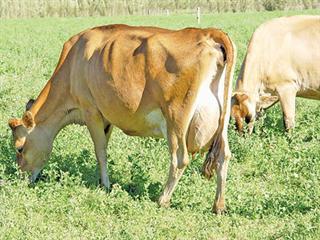
Before compiling a feeding schedule for dairy cows, get to know the requirements of the animals and the properties of the feed. In this issue, we look at concentrates and minerals that help to make up or supplement the deficiencies in roughage. Commonly used concentrates include:
Barley
On its own or with another small grain, good quality barley can replace up to 70% of maize.
Blood meal
This is a good source of protein, but palatability can be a problem, especially when given with meat meal (tankage).
Bone meal
This comprises bones that have been cooked, dried and ground. It is given primarily as a source of calcium, phosphorus and trace elements.
Brewer’s grains (barley)
This is a tasty mixture of barley, maize and brewer’s yeast.
Grain sorghum
This should be crushed in a roller mill. A hammer mill will crush it too finely, making it less palatable.
Fish meal
Although this is a good source of protein, its palatability could be a problem for animals that are not used to it.
Groundnuts
Too high levels of groundnuts can result in diarrhoea and decrease the butterfat percentage.
Lupin seed
This is relatively rich in protein and high in energy.
Maize
Both yellow and white maize are suitable as fodder. The best results are achieved when the maize is coarsely ground or rolled. The high starch content limits the daily portioning.
Meat meal (tankage)
This has a high percentage of protein, but palatability could be a problem, especially when used with blood meal.
Oats
Although this has a high fibre content, it is highly palatable and can replace maize for young animals.
Soya beans
These are high in protein and energy due to their high fat content, but are not recommended for rations that also contain urea.
Sunflower seed
The high oil content means a high energy potential, but protein is relatively low. It reduces the butterfat and protein in milk and cause diarrhoea when inclusion levels are high.
Wheat
The energy value is slightly less than that of maize. In cases of high intake, acidosis occurs sooner than with maize.
Wheat bran
This is relatively low in energy, with about 14% protein. It is also high in phosphate. It must be remembered, however, that concentrate should not be the only source of feed.
Source: Elsenburg infopak compiled for the Western Cape department of agriculture.













